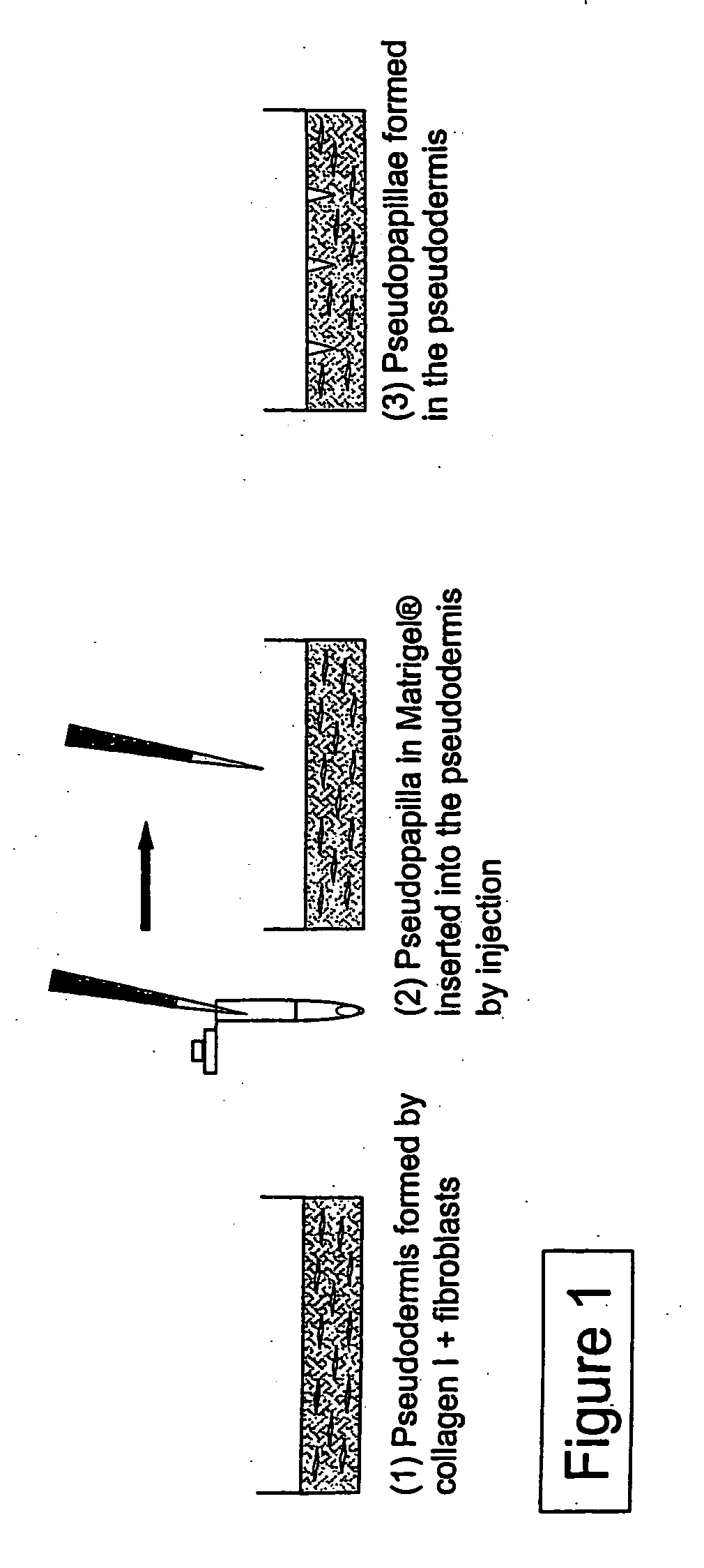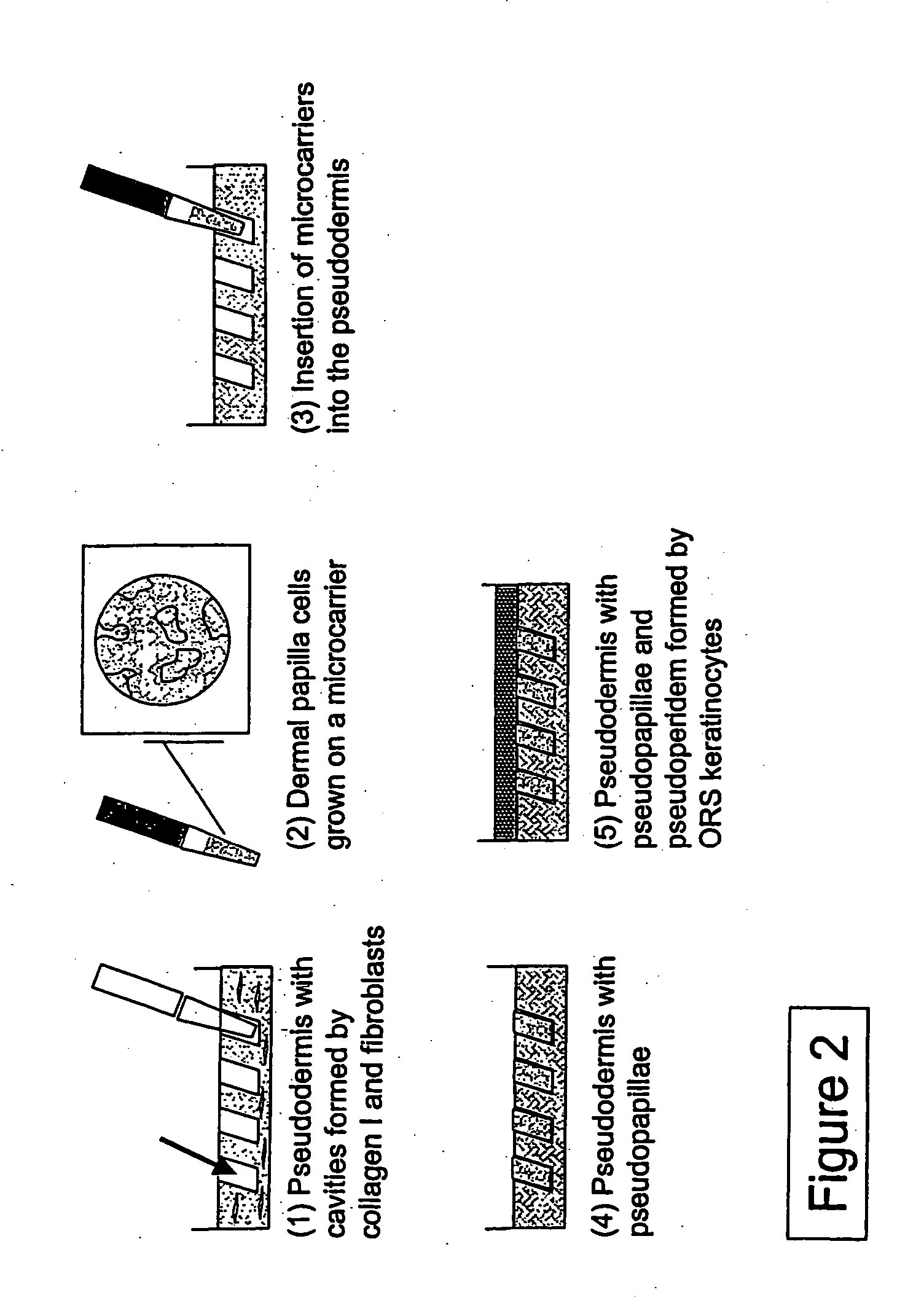Skin/hair equivalent with reconstructed papillae
a papillae and papillae technology, applied in the field of skin/hair equivalent, can solve the problems of inability to adapt to in vitro models, different cell behavior, material availability and standardizability,
- Summary
- Abstract
- Description
- Claims
- Application Information
AI Technical Summary
Benefits of technology
Problems solved by technology
Method used
Image
Examples
examples
[0075] The production of a skin / hair model with reconstructed dermal papillae (pseudopapillae; PP) embedded in or inserted into a pseudodermis (PD) is described in the following. To this end, dermal papilla cells are either injected into the pseudodermis (PD), or placed by means of punches in the pseudodermis (PD). Alternatively, dermal papilla cells grown on suitable carriers can be embedded by mixing with the pseudodermis preparation. The pseudodermis (PD) may subsequently be covered with a layer of epidermal or hair follicle keratinocytes, which represent a pseudoepidermis (PE) or a pseudoperiderm (PI), and optionally with melanocytes.
ABBREVIATIONSDMEMDulbecco's Modified Eagle MediumDPdermal papillaDPCdermal papilla cellsECMextracellular matrixEGFepidermal growth factorPCSfetal calf serumFGFfibroblast growth factorHBSSHank's buffered salt solutionNCAMneural cell adhesion moleculeNHEKnormal human epidermal keratinocytesORSouter root sheath keratinocytesRPMIRPMI Medium was develo...
PUM
| Property | Measurement | Unit |
|---|---|---|
| size | aaaaa | aaaaa |
| size | aaaaa | aaaaa |
| diameter | aaaaa | aaaaa |
Abstract
Description
Claims
Application Information
 Login to View More
Login to View More - R&D
- Intellectual Property
- Life Sciences
- Materials
- Tech Scout
- Unparalleled Data Quality
- Higher Quality Content
- 60% Fewer Hallucinations
Browse by: Latest US Patents, China's latest patents, Technical Efficacy Thesaurus, Application Domain, Technology Topic, Popular Technical Reports.
© 2025 PatSnap. All rights reserved.Legal|Privacy policy|Modern Slavery Act Transparency Statement|Sitemap|About US| Contact US: help@patsnap.com


